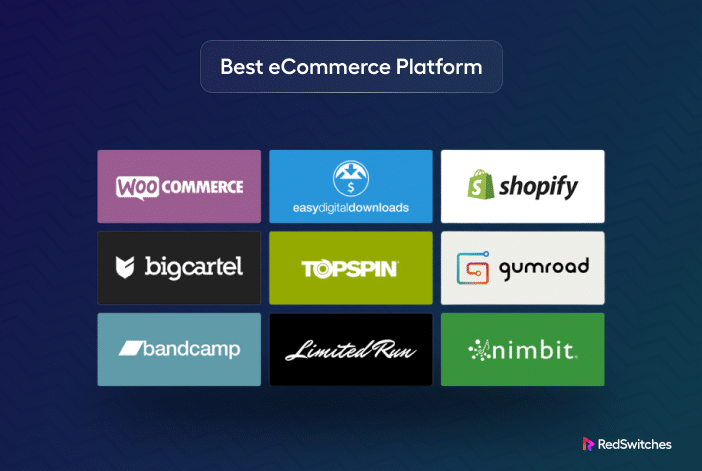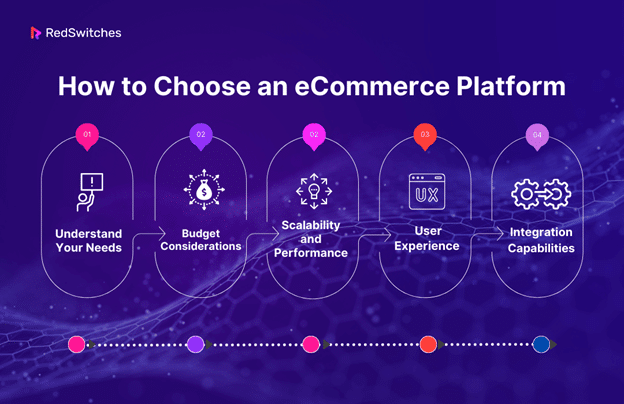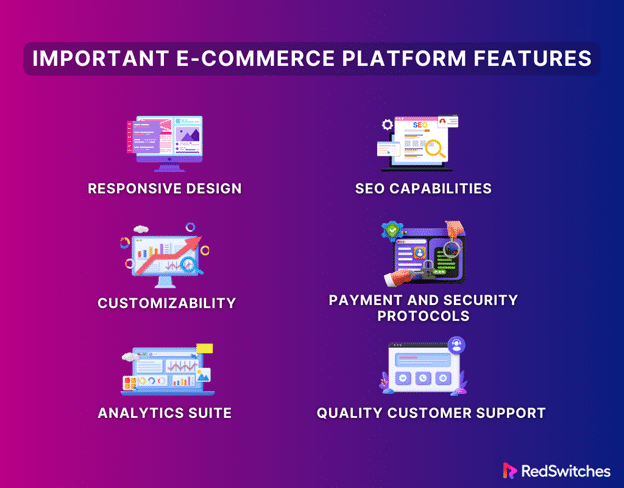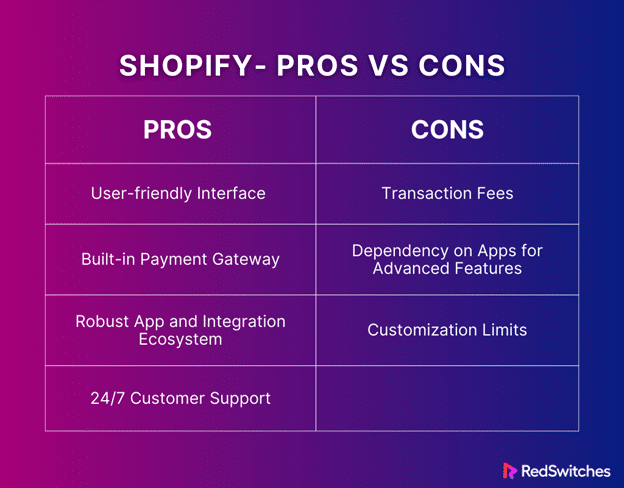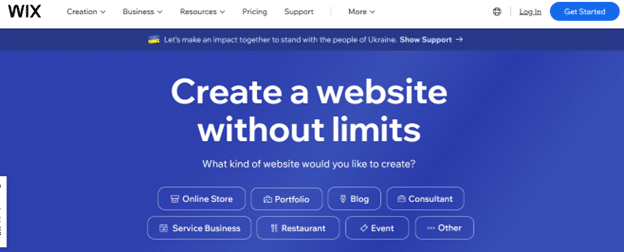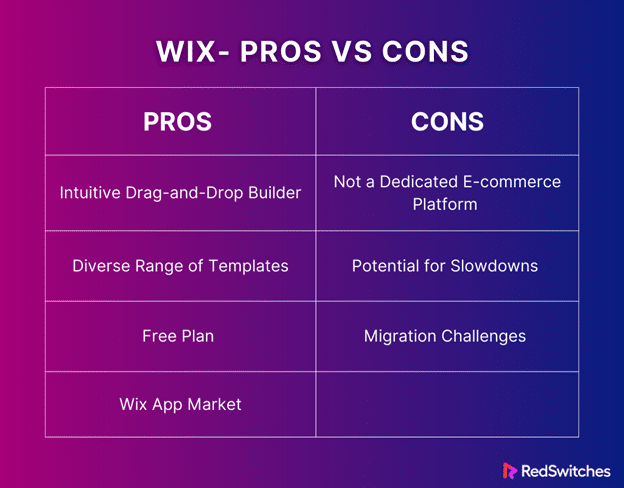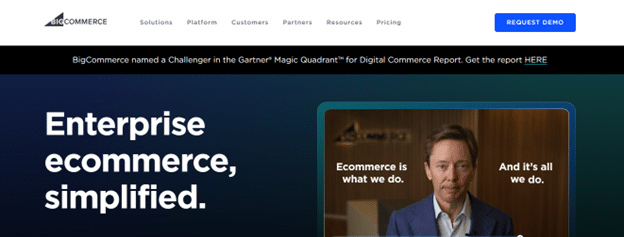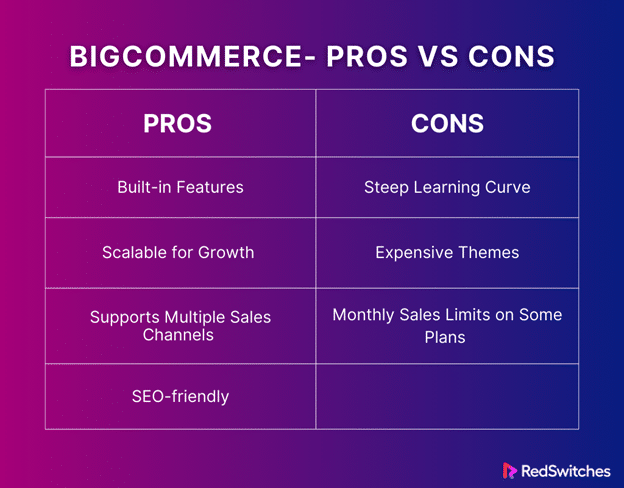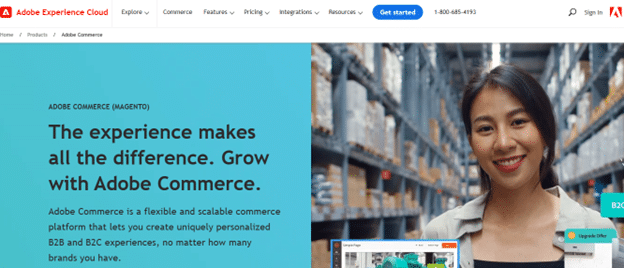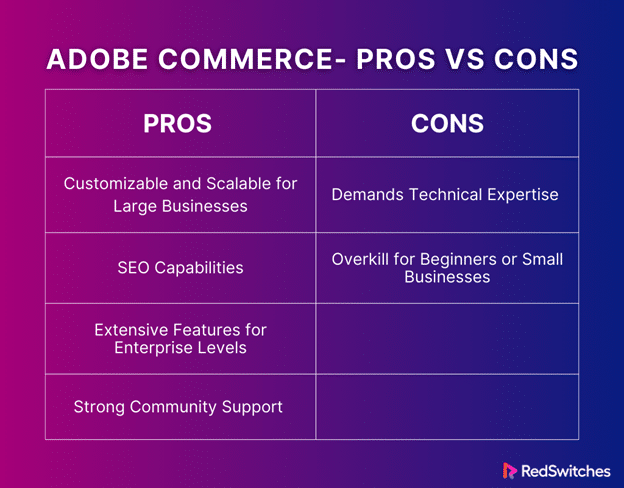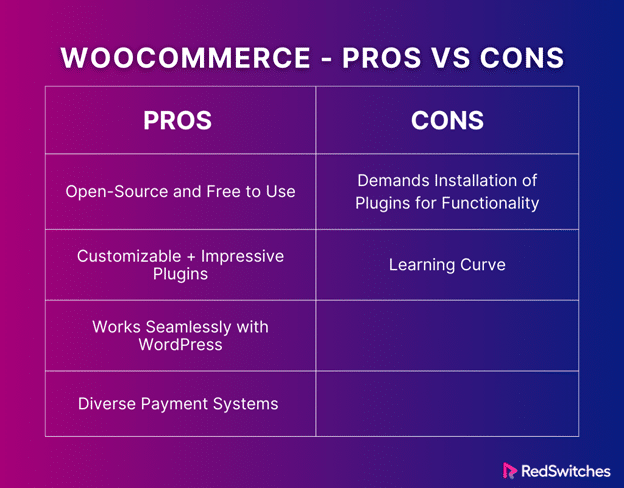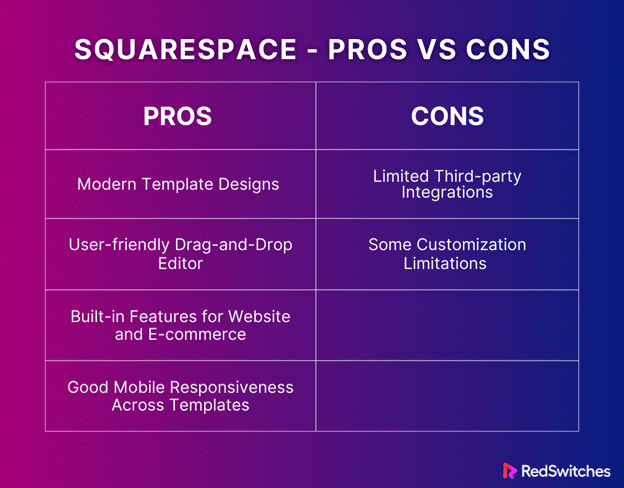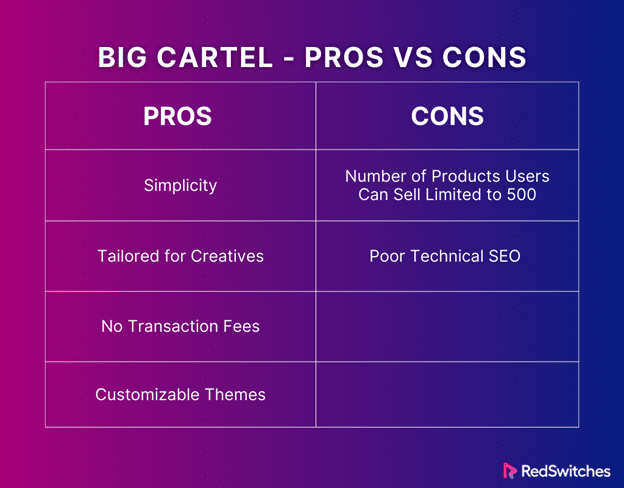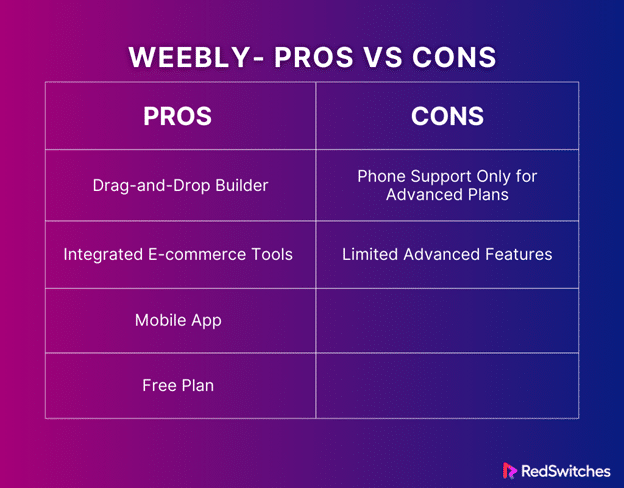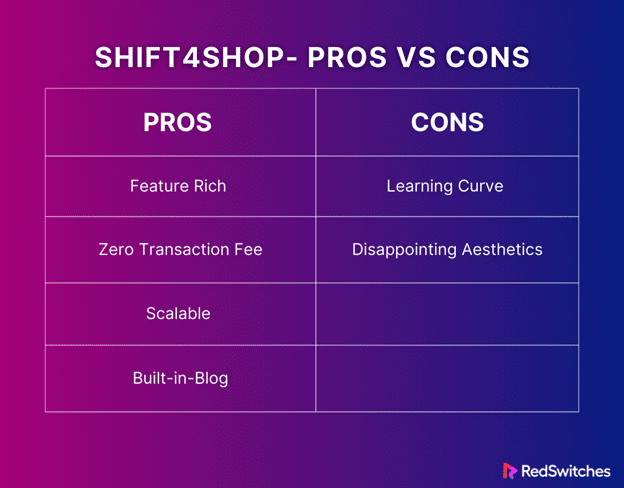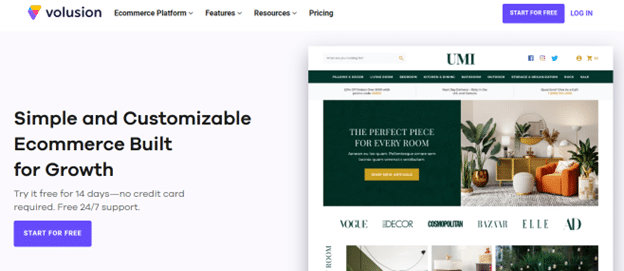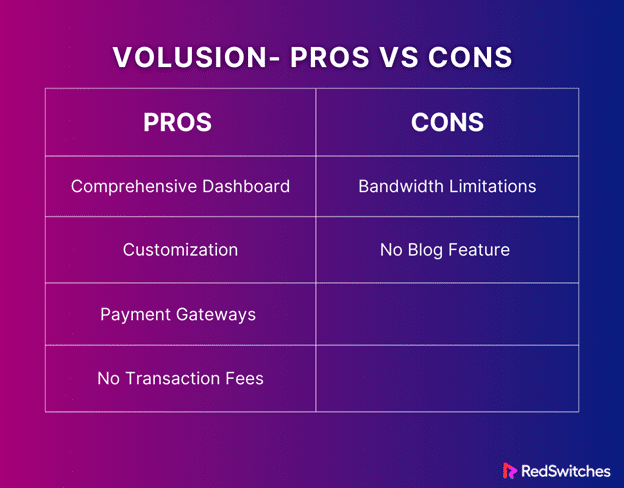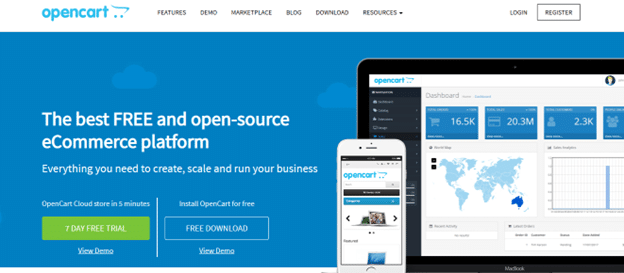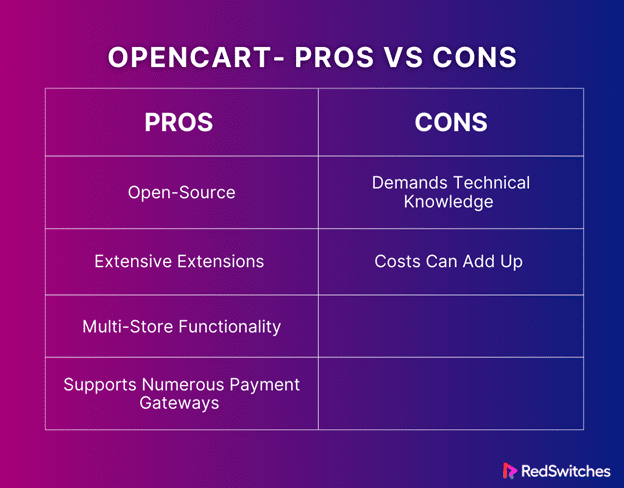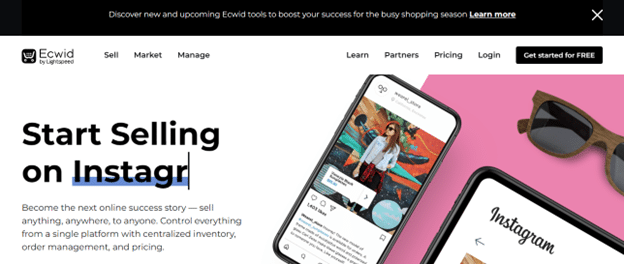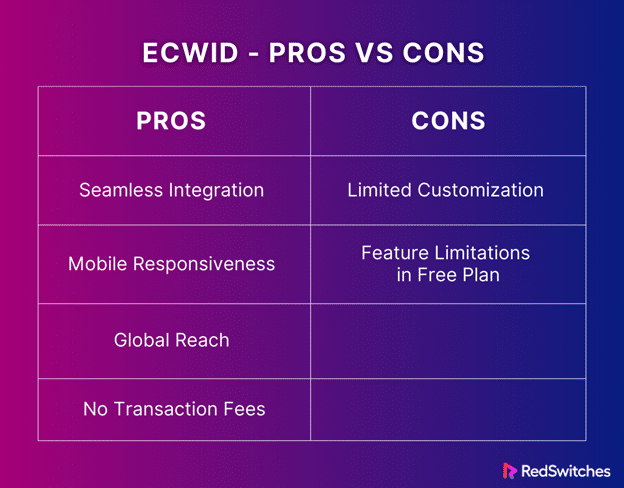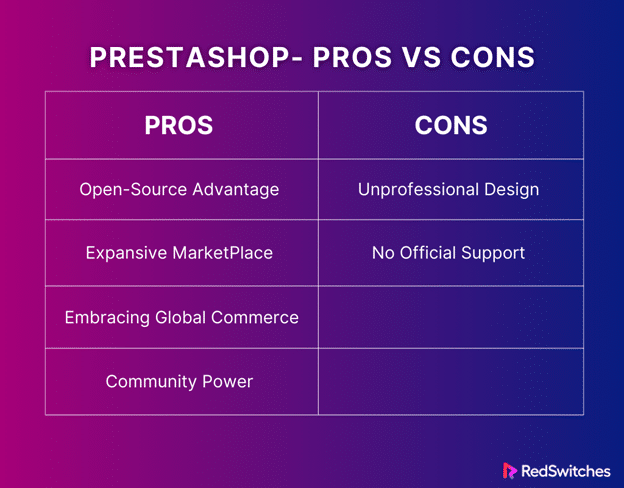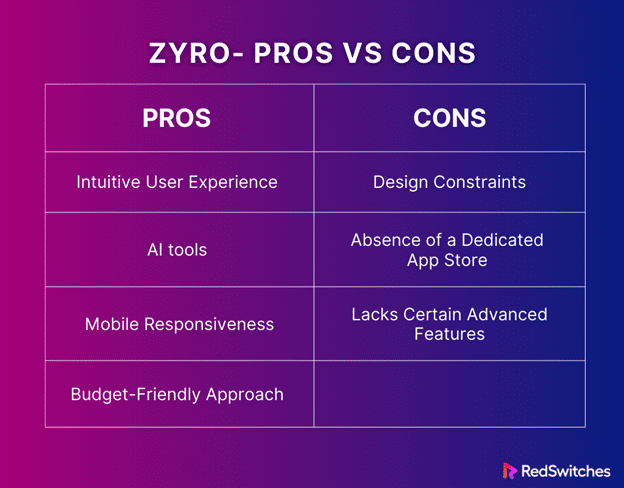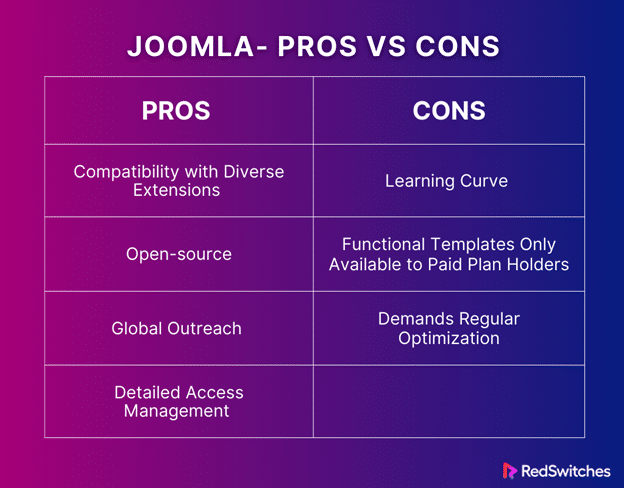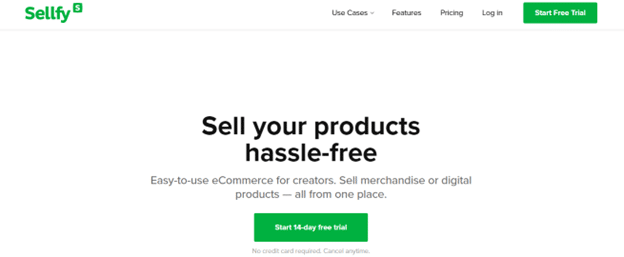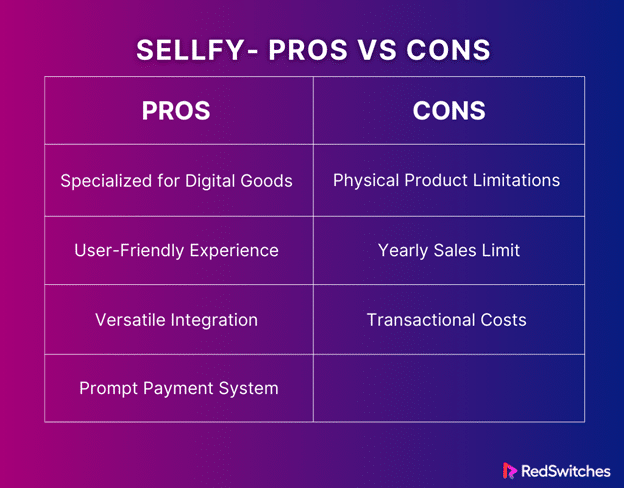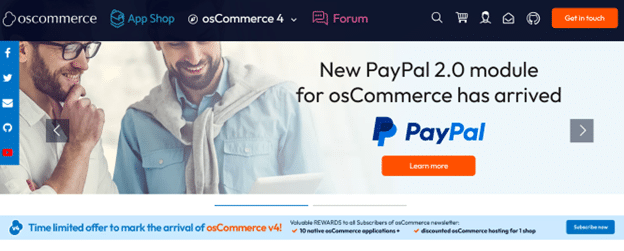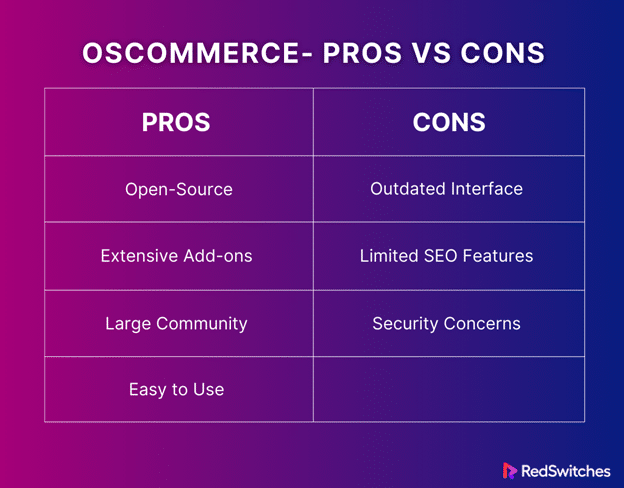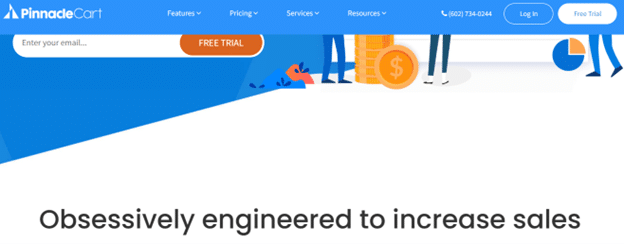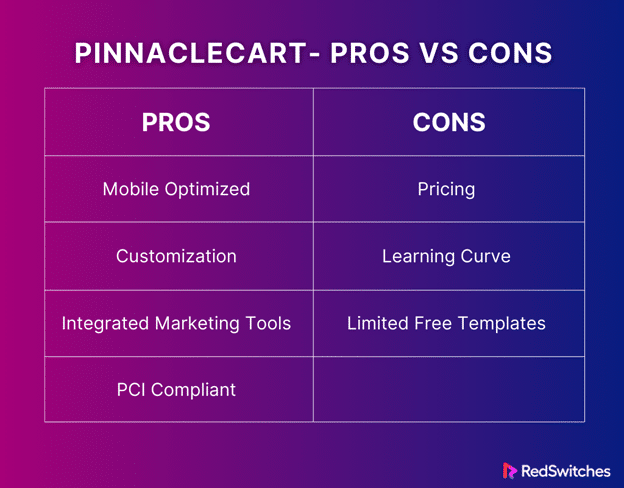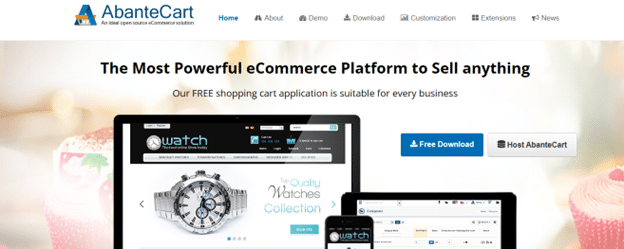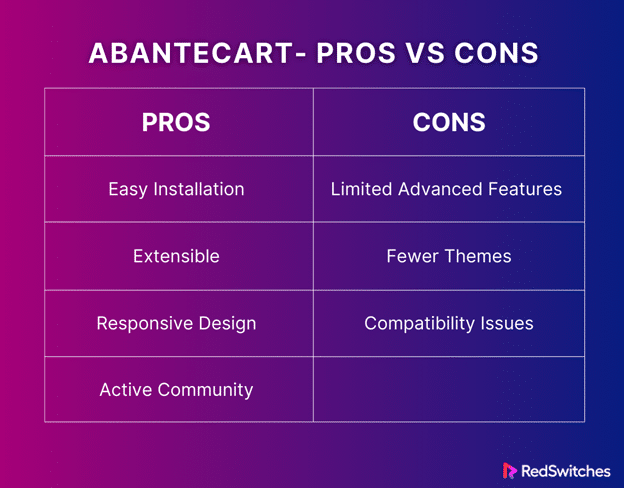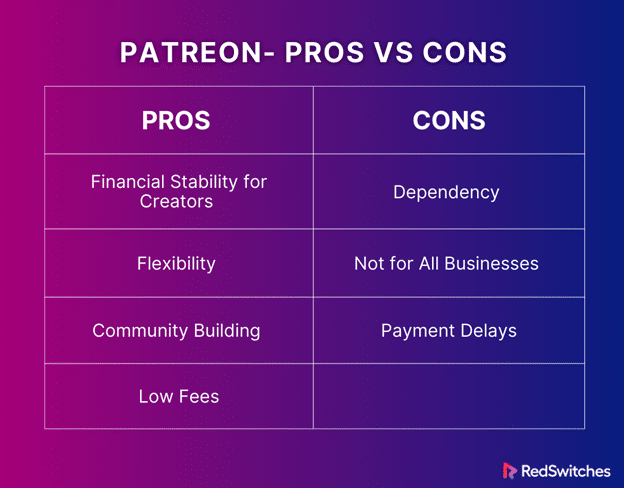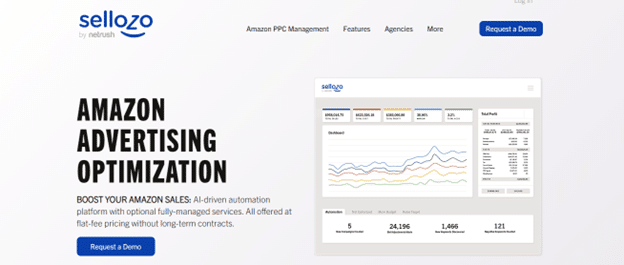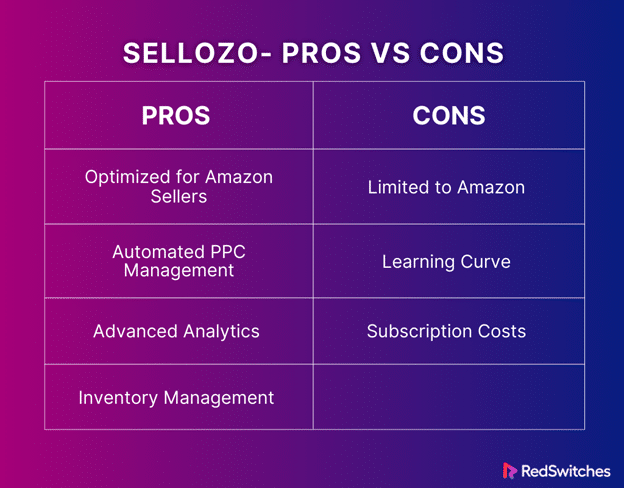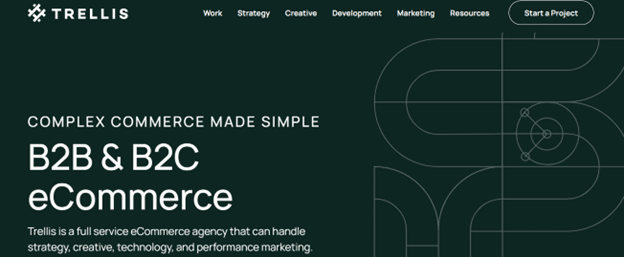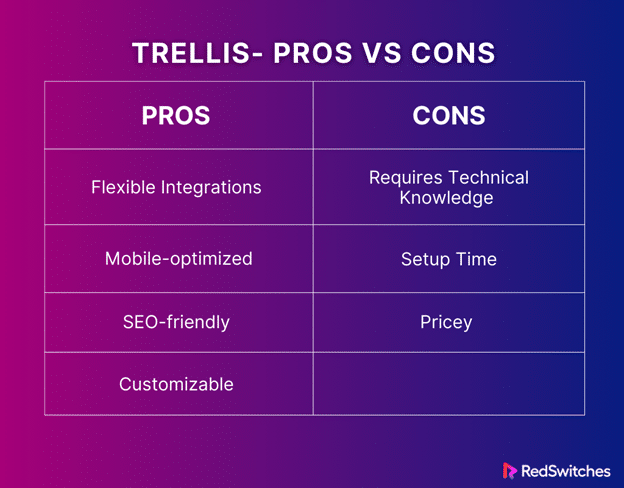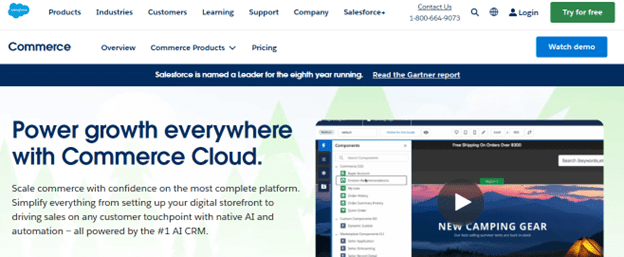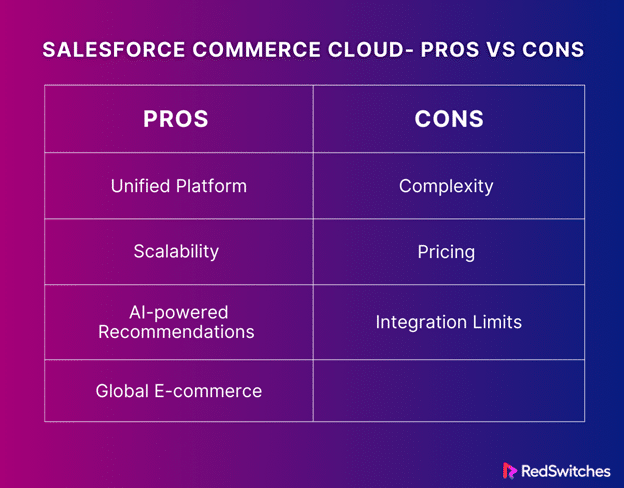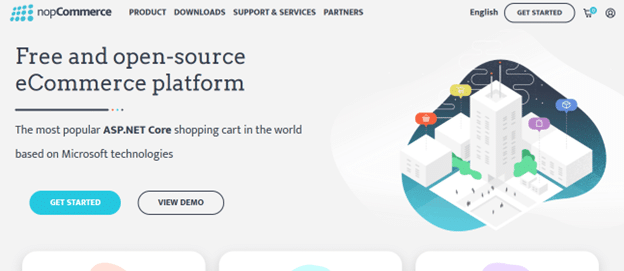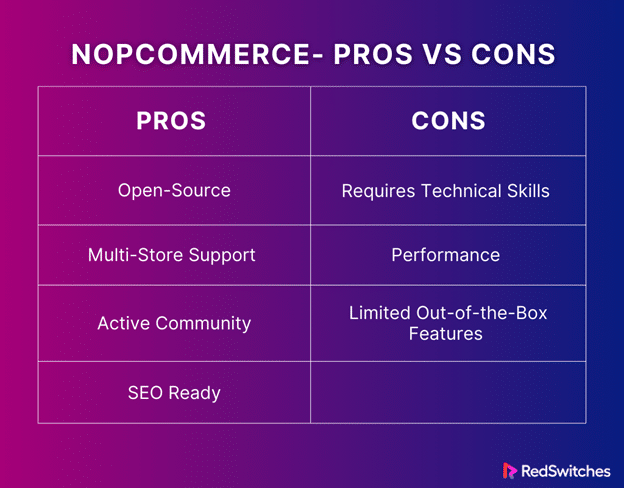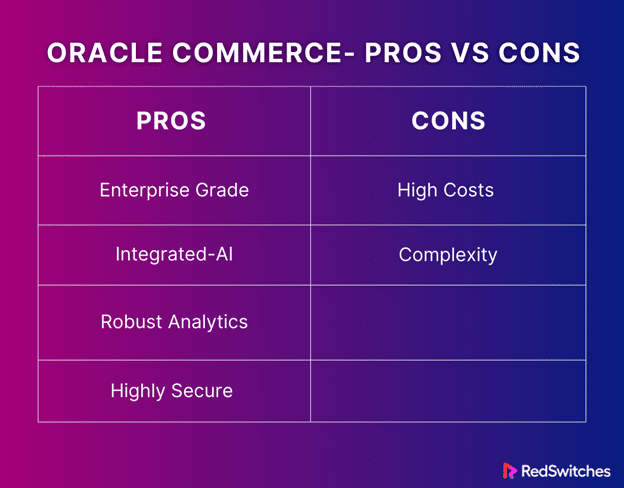Did you know that from 2023 to 2027, there will be a total of 15.2 million additional users in the American eCommerce sector – a continual rise of 5.53 percent? The indicator is predicted to reach 289.91 million users, reaching a new peak in 2027 after the ninth straight year of growth.
The eCommerce user base has steadily grown over the past few years. With more and more businesses stepping into the world of eCommerce, many eCommerce platforms are available. This brings us to the dilemma: what is the best eCommerce platform?
In this blog, we will review the most popular eCommerce platforms
in 2024 to help you discover the best eCommerce platform that fits your budget and needs.
Let’s begin!
Table of Contents
- What is an eCommerce Platform?
- How to Choose an eCommerce Platform
- Important eCommerce Platform Features
- Best eCommerce Platforms in 2024
- Shopify
- Wix
- BigCommerce
- Adobe Commerce (formerly Magento)
- WooCommerce
- Squarespace
- Big Cartel
- Weebly
- Shift4Shop (Formerly Known as 3dcart)
- Volusion
- OpenCart
- Ecwid
- PrestaShop
- Zyro
- Joomla
- Sellfy
- OsCommerce
- PinnacleCart
- AbanteCart
- Patreon
- Sellozo
- Trellis
- Salesforce Commerce Cloud
- nopCommerce
- Oracle Commerce
- Final Thoughts – The Best eCommerce Platform
- FAQs
What is an eCommerce Platform?
Before exploring the best platforms for eCommerce, we must delve into what an eCommerce platform is.
An eCommerce platform is the foundation for online businesses. It is a dynamic software tool curated to facilitate the buying and selling of products and services via the Internet. It is a virtual marketplace where real transactions occur, similar to brick-and-mortar stores.
Previously, setting up a business required stressful and time-consuming tasks like securing a physical location, managing in-store inventory, and hoping local foot traffic would lead to sales.
The digital age and the internet have transformed the conventional business playbook. With eCommerce platforms, businesses, whether solo ventures or multi-national corporations, can now tap into a global market without leaving their office.
One of the core benefits of these platforms is the wide range of functions they support. From displaying products or services aesthetically to managing stock levels, processing payments, facilitating customer reviews, and handling after-sales customer service, they provide an all-encompassing solution for businesses to operate smoothly in the digital world.
How to Choose an eCommerce Platform
It can be challenging to decide which eCommerce platform is best when countless top eCommerce platforms are available, but a clear understanding of your needs and goals can guide you to the best online eCommerce platform.
Let’s dive deeper into the important factors that can help you make an informed decision and choose the best eCommerce platform.
Understand Your Needs
The digital marketplace offers various platform choices, each tailored to different business models and needs. First, you must determine who you are in the business world.
For example, a local artist would value platforms offering a creative touch and storytelling features, whereas a tech giant dealing in electronics might prioritize robust inventory management and global shipping features.
Before venturing out, make a detailed list of your requirements and ensure that your chosen platform can accommodate your business’s scale, scope, and future aspirations.
Ask yourself the following questions:
- Are you searching ‘eCommerce sites for small business,’ or are you planning on selling on a large scale?
- What are your long-term business goals? Will you be expanding your product or services or venturing into new markets?
- Do you need a user-friendly platform for non-tech-savvy individuals, or do you have a tech team that can manage complex systems?
- What is your budget? (Let’s discuss this in detail.)
Asking these questions will allow you to discover the best eCommerce platform for your needs, budget, and requirements.
Budget Considerations
Although starting an online store is significantly cheaper than a physical one, costs are still involved. Many people may consider open-source platforms to cut costs.
Open-source platforms seem attractive but often include hidden expenses like security measures, plugins, hosting, and potential customization requirements.
Premium platforms, while demanding a higher initial investment, usually come as comprehensive packages with ongoing support – offering better value in the long term.
Coming to an informed decision requires the analysis of both immediate and long-term financial implications.
Scalability and Performance
Business growth is the main goal of every entrepreneur, but sometimes, entrepreneurs are not prepared to handle sudden growth.
Sometimes, online stores receive a sudden influx of traffic due to a viral product or a successful marketing campaign and end up crashing.
This makes it essential to choose the best platforms for an eCommerce website. A popular eCommerce platform with proven uptime records, good server response times, and the ability to seamlessly handle high traffic is ideal.
Remember to prioritize scalability when choosing a platform. The best eCommerce platform will grow as your product range or customer base grows.
The platform you choose should accommodate these expansions without demanding a complete overhaul.
User Experience
User experience is king in the digital realm. The platform’s backend should be intuitive for store owners, allowing you to easily add new products, manage orders, and get insights from analytics.
For the end-users (your customers), the browsing and purchasing process should be smooth. Look for mobile optimization platforms, as many shoppers now buy from mobile devices.
Secure payment gateways, efficient checkout processes, and responsive designs enhance the user’s shopping experience and can directly influence sales and return visits.
Integration Capabilities
No eCommerce platform exists in isolation. Integrations, whether CRM tools that manage customer interactions, email marketing platforms for outreach, or analytics tools for data-driven insights, are vital.
To ensure you choose the best eCommerce platform, the ability of your chosen eCommerce solution to play well with other software must be a priority.
This allows data to flow seamlessly between systems and saves you from the time-consuming task of entering data manually or dealing with inconsistencies, leading to more streamlined operations.
Read More: 9 Point Checklist for Choosing Best WordPress Hosting Service.
Important eCommerce Platform Features
Selecting the best eCommerce platform is similar to laying the foundation for a brick-and-mortar facility. The more durable, efficient, and flexible this foundation is, the quicker it can propel a business to success.
Here are the key features to consider when deciding which is the best eCommerce platform:
Responsive Design
Customer shopping habits are constantly evolving. For example, many consumers now make purchases via mobile devices. This makes it imperative to choose a platform that boasts a design adaptive to different screen sizes.
A responsive design will allow you to ensure visitors remain on your website and have a smooth shopping experience regardless of the device being used.
SEO Capabilities
High visibility is the aim of every entrepreneur setting up an eCommerce store. This involves ensuring your eCommerce platform boasts features that streamline product page optimization, craft precise meta descriptions, and formulate SEO-friendly URLs.
All these factors serve as the beacon, guiding potential customers to your digital storefront. A platform equipped with these tools can considerably amplify your reach in organic searches.
Payment and Security Protocols
A diverse array of safe payment methods is essential to today’s most popular eCommerce platforms. This allows these platforms to ensure they cater to the preferences of a wider audience, offering a positive shopping experience.
It can be easy to lose sight of security elements when focusing on offering multiple payment methods. Still, this inclusivity must always be balanced with another important feature: stringent security measures.
Strict security measures like SQL injection prevention, anti-spam measures, and SSL certificates help ensure transactional and personal data safety. They also offer peace of mind to customers and give potential customers a reason to trust your eCommerce site.
Customizability
A brand’s unique identity is its compass, guiding its values, vision, and voice. Every brand stands apart, distinguished by its unique visions and ethos. This individuality is not just a trait but a treasured asset.
When choosing an eCommerce platform, it mustn’t be just a standard canvas but a flexible tool. The best eCommerce platform will be adaptable enough to capture and convey the brand’s unique story, values, and aesthetics.
As the digital storefront is usually the first contact point with potential customers, it must offer an experience that’s true to the brand’s identity. A platform that allows customization ensures that this digital representation is more than a facade.
Analytics Suite
Knowledge isn’t just power. It’s the steering wheel guiding every business on its way to success. At the heart of this is a comprehensive analytics suite.
An analytics suite allows you to gain an unparalleled advantage by analyzing the sales metrics, understanding the products, captivating your visitors, and observing your customers’ behaviors.
Through learnings from analytics, you can get an idea of what’s working and what isn’t and tailor your offering accordingly.
Quality Customer Support
Quality customer support is one of the most important features every eCommerce platform will have. With the competitive eCommerce landscape, every business must stay on top of its customer support offerings and ensure all visitor queries and complaints are addressed and resolved promptly.
With experts ready to guide, troubleshoot, and assist, you will ensure that every visitor leaves your eCommerce site satisfied. A robust support system ensures that operations don’t grind to a halt at the first sign of an issue. Instead, with the proper guidance, businesses can navigate through learning and growing with each experience.
A quality customer support system also helps businesses prove their dedication to customer service to potential customers. It can serve as the motivational factor that prompts a potential customer to click ‘Buy Now.’
Now that we have discussed what an eCommerce platform is, its essential features, and how to choose one, let’s explore the best eCommerce development platforms and compare eCommerce platforms to help you find the best eCommerce platform based on your needs and budget.
Best eCommerce Platforms in 2024
Below is the list of the biggest eCommerce platforms in 2024:
Shopify
Credits: Shopify Website
Shopify is one of the most renowned eCommerce solutions that enables entrepreneurs to set up an online store with ease. It offers extensive features, including payments, marketing, and customer engagement tools.
Pros vs Cons
Pros of Shopify
- User-friendly Interface: Shopify is designed to focus on beginners. Even if you have zero technical knowledge, the platform’s intuitive interface guides you through the entire process of creating an online store step-by-step.
- Built-in Payment Gateway: Merchants can accept online payments through Shopify’s payment gateway without needing third-party integrations. This ensures a smooth checkout process for customers and minimizes friction in sales.
- Robust App and Integration Ecosystem: One of Shopify’s most significant strengths that makes it the best eCommerce platform is the vast ecosystem of apps available in the Shopify App Store. These apps help enhance the functionalities of your store, covering everything from SEO tools to advanced product options.
- 24/7 Customer Support: Whether it’s a technical glitch, a payment query, or a question about setting up a product, Shopify’s round-the-clock customer support ensures that help is always a click or a call away.
Cons of Shopify
- Additional Transaction Fees: If you choose a third-party payment gateway instead of Shopify Payments, be prepared for transaction fees. While this gives flexibility in choosing a preferred payment method, it does introduce an additional cost.
- Dependency on Apps for Advanced Features: While Shopify comes packed with many essential features, certain advanced functionalities require the installation of apps. This not only can increase costs but also add complexity in terms of managing multiple integrations.
- Customization Limits: Shopify’s standard customization might feel restrictive for businesses with unique requirements. Unless you upgrade to Shopify Plus or explore liquid coding, there can be limitations in tailoring the platform to your specific needs.
Price
Below are the pricing plans offered by Shopify:
- Basic: $25/month (ideal for individuals)
- Shopify: $65/month (ideal for small businesses)
- Advanced: $399/month (ideal for medium to large businesses)
Note! Shopify offers the first 3 months for $1/month.
Wix
Credits: Wix Website
Wix is a user-friendly website builder that offers eCommerce capabilities. It enables users to create a visually appealing online store without coding. Creative professionals particularly favor it due to its highly customizable templates and intuitive drag-and-drop interface.
Pros vs Cons
Pros of Wix
- Intuitive Drag-and-Drop Builder: The standout feature of Wix, making it the best eCommerce platform, is its user-friendly drag-and-drop interface. This feature allows even those without technical or design experience to create aesthetic sites.
- Diverse Range of Templates: Wix boasts a comprehensive library of professionally designed templates for various industries and niches. These templates are responsive and can be customized to fit individual preferences.
- Free Plan for Starters: Wix offers a free plan for individuals or businesses testing the waters. This can be particularly useful for those who want to understand the platform’s capabilities before committing financially.
- Wix App Market: This is a repository of various tools and extensions that can enhance the functionality of a Wix website. From eCommerce integrations to marketing tools, various apps are available to meet various needs.
Cons of Wix
- Not a Dedicated eCommerce Platform: Although Wix does offer eCommerce functionalities, it was not originally built as a specialized eCommerce platform. Certain advanced eCommerce features in platforms like Shopify might be missing or less refined.
- Potential for Slowdowns: Users have been seen complaining about the Wix site’s performance. As users add more features, apps, and elements, the website can become slower, impacting SEO rankings and user experience.
- Migration Challenges: The process of migrating from Wix can be complicated. Unlike platforms allowing easy data export, transferring content and design elements from Wix can be daunting.
Price
Below are the pricing plans offered by Wix:
Website Plans:
- VIP: $24/month
- Combo: $12/month
- Unlimited: $8/month
- Connect Domain: $4/month
Business and eCommerce Plans:
- Business VIP: $35/month
- Business Unlimited: $25/month
- Business Basic: $17/month
Enterprise Plans:
- Interested individuals can schedule a call with the Wix customer support representatives to learn more about the plan here.
BigCommerce
Credits: BigCommerce Website
BigCommerce is a noteworthy eCommerce platform curated for enterprises and fast-growing online businesses. It provides advanced functionality that focuses on driving sales.
Pros vs Cons
Pros of BigCommerce
- Built-in Features: One feature that allows BigCommerce to rank as the best eCommerce platform is that it includes a wide variety of tools and functionalities built-in. This offers convenience and can lead to cost savings as there’s no need to purchase additional apps.
- Scalable for Growth: BigCommerce is built with a focus on scalability. As your business grows, the platform can handle increased traffic and sales without compromising performance. This makes it suitable for both small businesses and larger enterprises.
- Supports Multiple Sales Channels: Multi-channel selling is crucial in modern eCommerce. BigCommerce allows merchants to integrate and sell through various channels, increasing visibility and potential sales.
- SEO-friendly: BigCommerce has a range of SEO tools and features built-in, ensuring products have a higher chance of ranking on search engines. Leveraging these features can lead to enhanced SERP rankings and sales.
Cons of BigCommerce
- Steep Learning Curve: New users might initially find BigCommerce’s interface and functionalities overwhelming, especially if they’re new to eCommerce. It may take time for users to understand and utilize the comprehensive features.
- Expensive Themes: While BigCommerce offers a range of free themes, some premium or specialized themes come with a cost. This can be a limiting factor for new businesses.
- Monthly Sales Limits on Some Plans: BigCommerce imposes a maximum annual sales volume depending on the chosen plan. Exceeding this limit means upgrading to a higher plan, which can be a sudden and unexpected cost for growing businesses.
Price
Below are the pricing plans offered by BigCommerce:
- Standard: $29/month
- Plus: $79/month
- Pro: $299/month
- Enterprise: Interested individuals can contact BigCommerce representatives at their contact number on their website for information on custom pricing.
Adobe Commerce (formerly Magento)
Credits: Adobe Commerce Website
Adobe Commerce, previously known as Magento, is an open-source eCommerce platform developers favor for its customizability and flexibility. It is a robust solution that offers extensive control over the user experience.
Pros vs Cons
Pros of Adobe Commerce
- Highly Customizable and Scalable for Large Businesses: One key feature that ranks Adobe Commerce among the top 5 eCommerce platforms is its unparalleled customization capabilities. This means businesses can tailor the platform to meet their specific needs. This customizability also extends to scalability, allowing businesses to expand and grow their site as their business grows.
- SEO Capabilities: The structure of Adobe Commerce is built with search engine optimization (SEO) in mind. This makes it easier for businesses to rank higher on search engines, ensuring that products are found by those searching for them online. Features like SEO-friendly URLs, meta tags, sitemaps, and more are standard.
- Extensive Features Catered to Enterprise-Level Needs: Adobe Commerce provides a range of advanced features that address the needs of large enterprises. This includes functionalities like advanced customer segmentation, B2B features, and comprehensive inventory management.
- Strong Community Support: Magento, now Adobe Commerce, has a longstanding history and, thus, a large, active community. This community consistently develops extensions and plugins to extend the platform’s capabilities.
Cons of Adobe Commerce
- Requires Technical Expertise to Set Up and Manage: Adobe Commerce demands specific technical know-how. Setting up, maintaining, and troubleshooting issues can be more complex, potentially requiring the expertise of dedicated developers. It may not be the best eCommerce platform for individuals lacking technical expertise.
- Might Be Overkill for Small Businesses or Beginners: Adobe Commerce might not be the best fit for individuals just starting out or for businesses that don’t have the resources to manage such a comprehensive platform. There might be more straightforward tools better suited for users of this category.
Price
Adobe Commerce offers two pricing plans: Adobe Commerce Pro and Managed Services. Interested users can learn more about these pricing plans by contacting Adobe Commerce customer representatives here.
WooCommerce
Credits: WooCommerce Website
WooCommerce is a free, open-source eCommerce plugin for WordPress that converts a website into a fully functional online store. It’s the best eCommerce platform for those familiar with WordPress, delivering extensive customization options and multiple themes and plugins.
Pros vs Cons
Pros of WooCommerce
- Open-Source and Free to Use: WooCommerce is an open-source platform, which means its source code is available free of cost. Users are not tied down to any particular service and don’t have to worry about licensing fees.
- Highly Customizable with a Large Ecosystem of Plugins: With thousands of plugins and themes, both free and premium, WooCommerce can be tailored to fit almost any online business need.
- Works Seamlessly with WordPress: WooCommerce integrates perfectly with WordPress, allowing users to leverage the power of the world’s most popular content management system and one of its most popular eCommerce solutions.
- Diverse Payment Systems: WooCommerce offers several payment systems to ensure they cater to the needs and requirements of a wide range of customers. You can conveniently use their preferred payment systems to pay their monthly dues.
Cons of WooCommerce
- Demands Installation of Plugins for Functionality: WooCommerce users may depend on other plugins for added functionality. This may be a significant drawback for small businesses or individuals on a budget.
- Learning Curve: Users have reported finding the initial setup process complicated on the platform. WooCommerce may not be the best eCommerce platform for individuals new to the world of eCommerce platforms.
Price
WooCommerce is a free and open-source platform.
Squarespace
Credits: Squarespace Website
Squarespace is a sleek website builder known for its distinct templates and all-in-one approach, including eCommerce functionalities. It’s the best eCommerce platform for small businesses and individuals focused on aesthetics and ease of use.
Pros vs Cons
Pros of SquareSpace
- Modern Template Designs: Squarespace is the best eCommerce platform for individuals seeking beautifully designed templates. The platform’s templates appeal to various industries, from bloggers to photographers to online retailers. This ensures that businesses can portray a professional image without needing design expertise.
- User-friendly Drag-and-Drop Editor: Squarespace’s intuitive editor makes creating and customizing a website easy, even for those without technical skills. Users can add elements, rearrange sections, and see real-time changes.
- Built-in Features for Both Websites and eCommerce: Unlike some platforms where you might need to integrate or add many features, Squarespace provides many essential tools. This includes blogging capabilities, SEO tools, and eCommerce features like product listings and payment gateways.
- Good Mobile Responsiveness Across Templates: In today’s digital age, ensuring your website looks good on mobile devices is crucial. Squarespace templates are designed to be responsive, ensuring a consistent and pleasant browsing experience for mobile users.
Cons of SquareSpace
- Limited Third-party Integrations: While Squarespace does offer a range of integrations, its ecosystem is less extensive than some competitors. This might mean businesses must compromise or find workarounds for specific functionalities.
- Some Customization Limitations: Squarespace might not be the best eCommerce platform for advanced users. These users might find Squarespace’s customization options restrictive, especially if they have experience using platforms that allow full code access or have more extensive plugin ecosystems.
Price
Below are the pricing plans offered by Squarespace:
- Personal: $16/month
- Business: $23/month
- Commerce (Basic): $27/month
- Commerce (Advanced): $49/month
Big Cartel
Credits: Big Cartel Website
Big Cartel is an eCommerce platform focused on independent artists and makers. It offers simple tools to sell products online with a priority on ease and simplicity.
Pros vs Cons
Pros of Big Cartel
- Simplicity: One of the key features of Big Cartel that makes it the best eCommerce platform is its simplicity. The platform’s design is simple and easy to understand. The user interface is intuitive, and setting up a shop is laid out in easy-to-follow steps.
- Tailored for Creatives: Big Cartel has a clear target demographic – artists and makers. The platform offers tools and features that fit well with the requirements of creatives. This includes effortless integration with print-on-demand services, inventory management tailored for unique items, etc.
- No Transaction Fees: Big Cartel doesn’t charge transaction fees. While there’s a cost associated with running a shop, especially if you opt for one of the paid plans, you don’t have to worry about giving up a percentage of your sales to the platform.
- Customizable Themes: Aesthetic presentation is paramount for artists and creatives. Recognizing this, Big Cartel offers a selection of themes that users can choose from. Not only are these themes professionally designed, but they also offer ample room for customization.
Cons of Big Cartel
- Number of Products Users Can Sell Limited to 500: Big Cartel has limited the number of products users can sell to 500. It may not be the best eCommerce platform for larger businesses looking to sell over 500 products.
- Poor Technical SEO: Users have reported dissatisfaction with the technical SEO offered by Big Cartel. This increases the need for SEO plugins, which can incur additional costs.
Price
Although Big Cartel offers a free plan for five products, it includes two pricing plans for users looking to list more than five products:
- 50 products: $9.99/month
- 500 products: $19.99/month
Weebly
Credits: Weebly Website
Weebly is a straightforward website builder with eCommerce capabilities that appeal to small businesses and entrepreneurs. It is celebrated for its simplicity and drag-and-drop interface.
Pros vs Cons
Pros of Weebly
- Drag-and-Drop Builder: One of Weebly’s most celebrated features that plays a major role in its being labeled the best eCommerce platform is its drag-and-drop builder. Users can drag elements like images, text boxes, and videos and drop them wherever they want on their webpage. This feature offers design freedom without the need to understand code, ensuring that even novices can craft beautiful websites.
- Integrated eCommerce Tools: The platform offers a comprehensive suite of eCommerce tools, from product listings, cart integrations, and payment gateways to shipping options. These tools are integrated smoothly into the platform, eliminating the need to juggle multiple services or plugins.
- Mobile App: Managing your website on the go is more of a necessity than a luxury in the current fast-paced environment. Weebly’s mobile app ensures website owners get to enjoy this luxury. Everything can be done directly from the app, whether updating product listings, tracking orders, or engaging with customers.
- Free Plan: Weebly offers a lifetime free plan for users on a budget. You don’t have to pay any amount of money for the plan. This can be great for new businesses or individuals just venturing into the world of eCommerce.
Cons of Weebly
- Limited Advanced Features: While Weebly is ideal for those starting their website journey, professionals and advanced users might feel the platform’s constraints. It may not be the best eCommerce platform for businesses or individuals seeking more intricate design elements, advanced analytics, or deeper customization.
- Phone Support Only for Advanced Plans: Phone support is critical to ensure that when you run into any issues or have queries, you can have them addressed promptly. Weebly only offers phone support for advanced plan holders, which can be a significant drawback for free plan users.
Price
Although Weebly emerges as one of the top 10 eCommerce platforms
by offering free plans, it also includes paid plans for users seeking advanced features. Below are the pricing plans offered by Weebly:
- Personal: $10/month
- Professional: $12/month
- Performance: $26/month
Shift4Shop (Formerly Known as 3dcart)
Credits: Shift4Shop Website
Shift4Shop offers many eCommerce tools that cater to businesses of all sizes. It emphasizes offering a blend of features to optimize online stores for sales.
Pros vs Cons
Pros of Shift4Shop
- Feature-Rich: One of the standout advantages of Shift4Shop, also labeled as the best eCommerce platform, is its wide range of features, from multiple payment gateways and advanced SEO tools to analytics and more. This wealth of features means businesses can remain on the platform even as their needs evolve without migrating to another solution.
- Zero Transaction Fee: Shift4Shop doesn’t charge any transcription fee. This can benefit new businesses and users on a tight budget. This feature can help individuals and businesses minimize expenses and maximize profits.
- Scalable: Shift4Shop has addressed a significant concern for individuals seeking a scalable eCommerce platform. It serves as the best eCommerce platform for small businesses and large enterprises. This flexibility reduces the likelihood of having to switch platforms later on.
- Built-in Blog: Shift4Shop comes with a built-in blogging tool. This means businesses don’t have to rely on third-party platforms like WordPress or Blogger. Having your blog hosted on the same platform as your store can streamline your workflow and enhance SEO benefits.
Cons of Shift4Shop
- Learning Curve: The extensive features offered by Shift4Shop also mean that there’s a lot to learn. It may not be the best eCommerce platform for complete beginners, who might find the extensive options and settings challenging to understand.
- Disappointing Aesthetics: Your website’s design can be pivotal in enticing visitors and turning them into customers. Some users have expressed that Shift4Shop’s default templates look slightly outdated, especially compared to competitors. While customization is possible, it might require technical know-how or hiring a professional, adding to the initial costs.
Price
Shift4Shop offers a free end-to-end eCommerce plan to US-based merchants. All users must achieve is to process at least $500 per month through the Shift4Shop store, and their monthly eCommerce platform is free. Other pricing plans offered by the platform include:
- Basic: $29/month
- Plus: $79/month
- Pro: $229.99/month
Volusion
Credits: Volusion Website
Volusion is a versatile eCommerce platform that offers an array of built-in features and an intuitive interface. It is suitable for startups and small to medium-sized enterprises.
Pros vs Cons
Pros of Volusion
- Comprehensive Dashboard: Volusion’s dashboard features a user-friendly interface that allows users to track inventory, monitor sales, view customer data, and gain insights from different analytics. This holistic view empowers businesses to make informed decisions.
- Customization: The platform offers CSS and HTML editing capabilities, granting users the power to tailor their online store to the minutest details. This feature particularly benefits advanced users or businesses wanting their eCommerce website to stand out.
- Payment Gateways: Ensuring seamless transactions is vital for any online store. With Volusion, businesses are not restricted in their choice of payment gateways. The platform supports several options, from popular ones like PayPal and Stripe to more niche providers, catering to its user base’s diverse needs.
- No Transaction Fees: A significant advantage, especially for budding businesses, is that Volusion does not charge transaction fees. This means businesses can retain a higher percentage of their profits, a crucial factor for growth and scalability.
Cons of Volusion
- Bandwidth Limitations: While Volusion offers a myriad of features, one aspect that users should be wary of is the bandwidth limitation on its plans. Depending on the chosen plan, there’s a limit on the amount of data transfer allowed. Exceeding this limit results in additional fees.
- No Blog Feature: Volusion lacks an integrated blog feature. It may not be the best eCommerce platform for users who want to incorporate a blog into their online store. These users may have to rely on third-party platforms and find ways to integrate or link them seamlessly.
Price
Below are the pricing plans offered by Volusion:
- Personal: $35/month
- Professional: $79/month
- Business: $299/month
- Prime: This plan is based on GMV. Interested users can contact Volusion sales here to learn more.
OpenCart
Credits: OpenCart Website
OpenCart is a free, open-source eCommerce platform that’s ideal for experienced web developers seeking a customizable and affordable solution. It offers merchants the flexibility to create a tailored online store with the help of a strong community and numerous extensions.
Pros vs Cons
Pros of Opencart
- Open Source: The primary advantage of OpenCart is its open-source nature. The software is free to use, download, and modify. Users can tweak and tailor the platform according to their needs without restrictions. This open-source nature can be highly beneficial for new businesses.
- Extensive Extensions: OpenCart emerges as the best eCommerce platform due to its vast marketplace of over 13,000 extensions. Users can also integrate many features to enhance functionality and improve user experience. Whether you want to incorporate a new payment gateway or boost SEO, there’s likely an extension.
- Multi-Store Functionality: OpenCart’s multi-store functionality allows users to manage multiple stores with different designs, products, and customer bases, all from a unified dashboard. It streamlines the management process, making it easier and more efficient.
- Supports Numerous Payment Gateways: One of the key concerns for eCommerce businesses is payment gateway compatibility. OpenCart addresses this issue by supporting various payment gateways, ensuring businesses can cater to a global audience without fretting about payment limitations.
Cons of Opencart
- Requires Technical Knowledge: While OpenCart is a powerful tool, it isn’t the best eCommerce platform for non-tech-savvy users. Installing and setting up the platform can be challenging, especially for those with limited technical expertise. Leveraging its full potential requires delving into its codebase.
- Costs Can Add Up: OpenCart might seem like a pocket-friendly solution due to its free-to-use model, but the expenses, like themes and extensions, can mount as you explore the ecosystem. Some extensions come with a one-time fee, while others have recurring costs. Factor in potential developer fees and the costs can quickly escalate.
Price
OpenCart is an entirely free-of-cost and open-source platform.
Ecwid
Credits: Ecwid Website
Ecwid ranks high as the best eCommerce platform, allowing users to create an online store or add a shopping cart to an existing site. It is praised for its ease of integration into multiple platforms like WordPress, Wix, and social media.
Pros vs Cons
Pros of Ecwid
- Seamless Integration: Ecwid can conveniently integrate with any site or social media platform. This allows for a smooth addition of eCommerce functionality without incurring the hassle of having to build a store from scratch.
- Mobile Responsiveness: The platform is highly mobile-friendly. This ensures that online stores are accessible to all mobile users, offering a positive user experience across all devices.
- Global Reach: Ecwid supports multiple languages and currencies. This makes it the best eCommerce platform for businesses aiming to reach a global market and target customers speaking varying languages.
- No Transaction Fees: Unlike other platforms, Ecwid does not charge extra transaction fees on sales. This allows merchants to keep their expenses low and profits high. Over time, merchants can save a significant amount of cash thanks to this feature.
Cons of Ecwid
- Limited Customization: While Ecwid is user-friendly, it may offer less flexibility and fewer customization options than more complex platforms like Magento or Shopify.
- Feature Limitations in Free Plan: Ecwid’s free plan is somewhat limited in features. This may necessitate upgrading paid plans for businesses needing advanced functionalities.
Price
Besides a free plan, Ecwid offers three pricing plans, including:
- Venture: $14.09/month
- Business: $29.08/month
- Unlimited: $82.50/month
PrestaShop
Credits: PrestaShop Website
PrestaShop is a free, open-source eCommerce solution that boosts many features and customization options to provide businesses with the tools to build a scalable online store. With its robust community and marketplace for add-ons, it is the best eCommerce platform for both developers and merchants.
Pros vs Cons
Pros of PrestaShop
- Open-Source Advantage: One element making PrestaShop emerge as the best eCommerce platform is its open-source nature. Users can access the platform’s code, allowing for comprehensive customization. The platform allows users to modify features, integrate specific tools, or tweak the design. This flexibility ensures your online store can evolve and adapt as your business grows.
- Expansive Marketplace: With over 3,000 templates and modules, the platform offers ample possibilities for customization. Whether you’re aiming for a particular aesthetic appeal or need specific functionalities, PrestaShop’s marketplace has something for everyone.
- Embracing Global Commerce: PrestaShop offers multilingual support, ensuring you can cater to a diverse clientele. This allows you to make your website accessible to clients worldwide, break down language barriers, and enhance user experience.
- Community Power: PrestaShop boasts one of the most active community support. The community is always ready to assist if you’re facing challenges, looking for specific modules, or need advice on best practices. This community of developers, store owners, and enthusiasts ensures you’re never alone in your eCommerce journey.
Cons of PrestaShop
- Unprofessional Design: While PrestaShop offers a decent design for small/low-budget stores, its design lacks professional appeal, making it unsuitable for larger enterprises.
- No Official Support: PrestaShop lacks an official support team. This is a considerable drawback, especially for individuals or businesses new to eCommerce platforms. Such users may require support and assistance from professionals.
Price
PrestaShop is completely free of cost. The platform doesn’t charge commissions on sales or monthly fees.
Zyro
Credits: Zyro Website
Zyro is a website builder with integrated eCommerce capabilities. It focuses on ease of use and affordability, making it attractive for small businesses and entrepreneurs.
Pros vs Cons
Pros of Zyro
- Intuitive User Experience: Zyro’s drag-and-drop feature is central to its overall appeal. It’s tailored so that even individuals without any background in website development can easily navigate the platform, creating a functional eCommerce website effortlessly.
- Extensive AI Tools: One of Zyro’s standout offerings is its range of AI-powered tools. These tools encompass functionalities from suggesting one-of-a-kind business names to producing visually appealing logos. This AI integration shows the platform’s commitment to leveraging modern technology to enhance user experience.
- Budget-Friendly Approach: The platform features a highly cost-effective pricing structure. Especially when benchmarked against its competitors, Zyro emerges as the best eCommerce platform that provides significant value, making it an attractive choice for new entrepreneurs and small-scale businesses.
- Prioritizing Mobile Users: Zyro prioritizes mobile responsiveness by ensuring its websites are primed for mobile interfaces. Businesses don’t miss out on the vast mobile user base and can offer a positive shopping experience across different devices.
Cons of Zyro
- Design Constraints: One of the trade-offs for Zyro’s simplicity might be felt by advanced users who seek extensive customization options. The platform, while user-friendly, might feel limited for those looking for more bespoke design elements.
- Absence of a Dedicated App Store: One noticeable difference between Zyro and its competitors is the absence of an app store. Users might have to incorporate third-party solutions for specific integrations, which can be a significant drawback for many.
- Teething Pains of a Newcomer: Every platform has a growth trajectory, and Zyro, being relatively new, is on its ascent. Although it has made commendable strides, certain advanced features or integrations could be incorporated, something that more mature platforms might already offer.
Price
Below are the pricing plans offered by Zyro:
- Website: $2.59/month (Create a personal website, professional portfolio, or blog)
- Business: $3.59/month (Begin selling with 3-commerce essential)
Joomla
Credits: Joomla Website
Joomla! is an open-source content management system with eCommerce extensions. It is suitable for those who need a website and shopping functionalities and are comfortable with a steeper learning curve.
Pros vs Cons
Pros of Joomla
- Compatibility with Diverse Extensions: One of the hallmarks of Joomla is its ability to accommodate multiple extensions. These official and community-contributed extensions enhance the platform’s capabilities by adding diverse functionalities. Whether it’s eCommerce, SEO, or social media integration, there’s likely an extension that caters to that specific need.
- Open-Source: The open-source nature of Joomla makes it the best eCommerce platform for new businesses or individuals on a budget. It allows them to create compelling websites without incurring expenses.
- Global Outreach: Recognizing the global nature of the internet, Joomla Incorporates in-built multilingual support. This feature facilitates businesses and content creators aiming for a diverse audience, allowing them to cater to users in their native languages without resorting to third-party plugins or tools.
- Detailed Access Management: Joomla’s Access Control List (ACL) is one of its more advanced features. It grants site administrators a new level of control, allowing them to define specific roles, decide what each user or group can see or modify, and maintain a tight grip on the website’s content and functionalities.
Cons of Joomla
- Learning Curve: Joomla is robust and packed with features, but this also means that newcomers might find it slightly intimidating. It might not be the best eCommerce platform for newcomers in the eCommerce world since understanding how Joomla works might be time-consuming and stressful for such users.
- Functional Templates Only Available to Paid Plan Holders: Although Joomla is an open-source platform with multiple free templates, users have reported the functional templates to be limited to only paid plan holders.
- Demands Regular Optimization: While Joomla Offers a lot, optimization is crucial to ensure it runs efficiently. Without it, users might experience lag or other performance-related issues, which can detract from the overall user experience.
Price
Joomla is open-source and completely free. You can download the software, modify it, and deploy it for your eCommerce website without incurring any direct cost.
Sellfy
Credits: Sellfy Website
Sellfy is an eCommerce platform that caters to creators and digital product sellers. It offers a simple yet powerful solution for selling directly to fans and followers.
Pros vs Cons
Pros of Sellfy
- Specialized for Digital Goods: Sellfy is the best eCommerce platform for those selling digital commodities. This includes but is not limited to eBooks, downloadable music files, digital art, and videos. This focus ensures that the needs of digital product sellers are met, from storage to secure delivery.
- User-Friendly Experience: One of the standout features of Sellfy is its user interface. It’s designed to be uncomplicated and intuitive. Even individuals who might be new to the world of eCommerce or those without technical backgrounds can easily navigate the platform, setting up their digital storefront without hurdles.
- Versatile Integration: With the digital world becoming increasingly interconnected, Sellfy offers the flexibility to integrate your digital store into various online spaces. Whether it’s a personal website, blog, or social media profile, Sellfy provides tools to seamlessly embed product widgets, ensuring that your digital products are easily accessible to your audience no matter where they engage with your content.
- Prompt Payment System: Understanding the importance of cash flow, especially for independent creators, Sellfy has prioritized a payment system that doesn’t hold back your earnings. Once a sale is confirmed, the payment is processed instantly, allowing creators immediate access to their funds.
Cons of Sellfy
- Physical Product Limitations: While Sellfy excels in the digital product domain, it might not be the best eCommerce platform for those looking to sell physical products. The platform’s features and tools are not as equipped to handle the nuances and complexities of selling tangible items.
- Yearly Sales Limit: Although Sellfy boasts monthly plans lower than competitors, it charges a 2% fee for the number of profits that exceed your plans. This can increase the overall costs of running your business and take a large chunk of your profits.
- Transactional Costs: While the monthly fee structure is transparent, potential users should know that transaction fees are associated with each sale. This additional cost can add up, especially for those with a high sales volume, and is something to factor into budget considerations.
Read More: Shopify vs WordPress 2023 Analysis: 12 Key Differences.
Price
Below are the pricing plans offered by Sellfy:
- Starter: $19/month
- Business: $49/month
- Premium: $99/month
OsCommerce
Credits: OsCommerce Website
Oscommerce is one of the pioneering open-source eCommerce platforms. It boasts a wide range of tools and features that allow for the complete customization of online stores.
Pros vs Cons
Pros of OsCommerce
- Open-Source: The open-source nature of OsCommerce is its biggest strength. It provides unparalleled access to the platform’s core code. This allows developers to tailor and expand the software per unique business needs. It offers a flexibility that most competitors cannot match.
- Extensive Add-ons: One of the remarkable features of OsCommerce is its repository of add-ons. The platform arms businesses with over 7,000+ tools and features. This ensures they can craft and enhance their online store’s functionality according to their needs.
- Large Community: OsCommerce has built a considerable community in the last two decades. A large community translates to shared knowledge, problem-solving forums, and a pool of developers who’ve worked on similar challenges. It’s like having a vast support system at your fingertips.
- Easy to Use: Users appreciate the easy-to-use interface OsCommerce It is the best eCommerce platform for less tech-savvy users and individuals new to the world of eCommerce platforms.
Cons of OsCommerce
- Outdated Interface: Keeping up with contemporary design trends can be challenging, and OsCommerce proves this since its interface reflects its age. New users accustomed to modern interfaces might find OsCommerce’s design a bit dated, impacting their overall user experience.
- Limited SEO Features: OsCommerce offers only a few SEO tools in its basic form. While there are plugins to rectify this, it would have been more beneficial if these features were integrated into its core.
- Security Concerns: Over the years, OsCommerce has faced security issues. While many of these vulnerabilities have been addressed, businesses need to be cautious and ensure they employ additional security measures.
Looking to enhance the security of your eCommerce platform? Read our informative blog, ‘17 Best Security Penetration Testing Tools The Pros Use,’ to learn about penetration testing tools that can help you pinpoint weaknesses.
Price
OsCommerce is an open-source platform. It is free to download and use. You can download the software, modify it, and deploy it for your eCommerce website without incurring any direct cost.
PinnacleCart
Credits: PinnacleCart Website
PinnacleCart is an all-inclusive eCommerce platform that empowers businesses to create, manage, and grow an online store. It was built with a strong emphasis on marketing and SEO.
Pros vs Cons
Pros of PinnacleCart
- Mobile-Optimized: PinnacleCart is designed to be mobile-friendly. This ensures that online stores are accessible and provide a smooth experience, whether a customer is browsing on a desktop, smartphone, or tablet.
- Customization: One of the standout features of PinnacleCart, often hailed as the best eCommerce platform, is its adaptability. Users enjoy a wide range of customization options; even those without coding knowledge can edit their online storefronts to their preferences. It bridges the gap between tech-savvy developers and business owners.
- Integrated Marketing Tools: Visibility is crucial in the online realm. PinnacleCart offers built-in SEO and marketing tools. These tools boost businesses’ online presence, making them more discoverable in search engine results and potentially driving more organic traffic to their stores.
- PCI Compliant: When considering whether to purchase from an eCommerce site, consumers factor in elements like PCO compliance to determine whether they can trust the site. Consumers want assurance that their sensitive data, including credit card details, is safe. PinnacleCart’s PCI compliance ensures that all transactions are held to the highest security standards.
Cons of PinnacleCart
- Pricing: Costs can be a determining factor when selecting an eCommerce platform. PinnacleCart offers many advanced features, but accessing some can be more costly than other platforms.
- Learning Curve: While offering a wide range of functionalities is a strength, it can also be a double-edged sword. The extensive functionalities of PinnacleCart may not make it the best eCommerce platform for new users, especially those unfamiliar with eCommerce platforms. Such users may find it challenging to understand the workings of these functionalities.
- Limited Free Templates: While PinnacleCart does offer templates to set up a store, the number of free options is limited. Businesses might find themselves restricted if they’re looking for a specific aesthetic without wanting to incur additional costs.
Price
Although PinnacleCart offers a free plan, the platform does include pricing plans for users requiring more advanced features. Below are the pricing plans offered by the platform:
- Standard: $79.95/month
- Advanced: $199.95/month
- Enterprise: The prices for the enterprise plan can vary. Interested individuals can contact PinnacleCart sales representatives to learn more.
AbanteCart
Credits: AbanteCart Website
AbanteCart is a free, open-source eCommerce solution that is community-driven. It stands out from other platforms by focusing on ease of use and flexible expansion capabilities through extensions.
Pros vs Cons
Pros vs AbanteCart
- Easy Installation: AbanteCart prioritizes user experience – evident from their one-click installation feature. This ease of setup ensures that even users unfamiliar with technical nuances can get their online setup without issues. It removes a significant barrier that many face when starting in the eCommerce world.
- Extensible: Flexibility is a significant element of AbanteCart’s design. The platform offers a plethora of extensions, allowing businesses to tailor their online store to their specific needs. As your business grows or its needs evolve, AbanteCart can adapt accordingly.
- Responsive Design: Today, visitors access online stores from various devices, from desktops to smartphones. AbanteCart’s responsive design ensures a consistent and smooth shopping experience for users regardless of their device. This responsiveness enhances the user experience and can positively impact search engine rankings.
- Active Community: One of the top features that allow AbanteCart to rank as the best eCommerce platform is its community. Users, developers, and enthusiasts back the platform. This community continually updates the platform, creates extensions, and, more importantly, offers support.
Cons vs AbanteCart
- Limited Advanced Features: While AbanteCart offers a broad range of basic functionalities, certain advanced features might demand investing in paid extensions. This can mean additional expenses for businesses, especially those looking for specialized functionalities not covered by the free offerings.
- Fewer Themes: The visual appeal of an online store can significantly impact user engagement and sales. AbanteCart, in comparison to competitors, offers a limited range of themes. This might restrict businesses that have specific design aspirations.
- Compatibility Issues: Some users have highlighted issues when integrating specific extensions on AbanteCart. While not a widespread problem, it’s essential to be aware of potential compatibility challenges when adding multiple extensions.
Price
AbanteCart is completely free. Users do not have to pay any startup, subscription, licensing, or transaction fee.
Patreon
Credits: Patreon Website
Patreon extends beyond a traditional eCommerce platform. It is a membership platform that enables creators to earn a subscription income by providing exclusive content to their subscribers.
Pros vs Cons
Pros of Patreon
- Financial Stability for Creators: One of the standout features of Patreon, the best eCommerce platform, is its subscription-based model. This model empowers creators by giving them a more steady and predictable income stream. Instead of relying on one-time sales or ad revenue, creators can forecast their earnings depending on the amount of patrons they have.
- Flexibility: Every creator’s audience and content are unique, and Patreon understands that. The platform lets creators design different subscriptions, each offering unique perks or content access levels. This tiered approach offers value to patrons and allows creators to cater to different audience segments.
- Community Building: Beyond just a monetization tool, Patreon serves as a community hub. Creators can use the space to engage with their supporters. This can help foster deeper relationships through exclusive content, behind-the-scenes snippets, and direct communication channels, turning casual fans into long-term patrons.
- Low Fees: Fees can quickly eat into a creator’s earnings. While not devoid of charges, Patreon’s fee structure is reasonable, especially compared to other monetization avenues. This ensures that a more significant chunk of the money patrons pay goes directly to the creators.
Cons of Patreon
- Dependency: Patreon can sometimes become a creator’s primary income source. This dependency can be concerning. If Patreon changes its policies and fee structures or faces technical issues, it might directly impact a creator’s livelihood.
- Not for All Businesses: Patreon thrives in content creation (podcasts, art, music, or videos). It might not be the best eCommerce platform for businesses with a more traditional model, like retail or services. Its structure and offerings are not optimized for typical eCommerce or service-based monetization.
- Payment Delays: Even after a successful billing cycle, creators don’t get immediate access to their earnings. There’s a processing period, which varies depending on the withdrawal method the creator selects. Although this delay is standard in many online payment systems, it’s worth noting for those needing quicker access to their earnings.
Price
Below are the two pricing options offered by Patreon:
- Pro: The pro plan features a core tool set to foster earnings for your creative work from your Patreon community in return for 8% of your income.
- Premium: The premium plan features advanced tools to help you profit from your creative work in return for 12% of your earnings.
Sellozo
Credits: Sellozo Website
Sellozo is a platform designed to optimize Amazon advertising and profitability. It has automated tools for Amazon sellers to manage and grow their online business.
Pros vs Cons
Pros of Sellozo
- Optimized for Amazon Sellers: At its core, Sellozo, the best eCommerce platform, is finely tuned for Amazon’s marketplace. This focus ensures that merchants selling on Amazon have access to tools and functionalities engineered explicitly for their unique requirements. This isn’t just boosting sales but also creating an environment where Amazon sellers can operate more effectively.
- Automated PPC Management: Pay-per-click (PPC) campaigns are vital for online visibility, especially on a platform as crowded as Amazon. Sellozo’s platform acknowledges this by offering automated tools. These tools not only initiate campaigns but also regularly adjust and optimize them. This automation means users can allocate their time elsewhere rather than micromanage their advertising efforts.
- Advanced Analytics: Sellozo provides an in-depth analytical framework, allowing sellers to dive deep into the nuances of their sales metrics, profit margins, and ad campaign performances. This robust analytical insight ensures that sellers are always on top of their operations and can make informed decisions.
- Inventory Management: An often overlooked yet vital aspect of eCommerce is inventory management. Running out of stock or overstocking can both be detrimental. Sellozo is the best eCommerce platform for individuals seeking inventory management support. It offers tools that maintain a balance, ensuring products are consistently available without excessive stock that ties up capital.
Cons of Sellozo
- Limited to Amazon: While Sellozo’s dedicated approach to Amazon is one of its strengths, it’s also a limitation. Sellers operating on multiple platforms or wishing to diversify their online presence might find Sellozo restrictive.
- Learning Curve: As with many specialized tools, there’s a degree of initial complexity. New users, especially those unfamiliar with eCommerce intricacies, might need to invest time in understanding the platform’s breadth and depth.
- Subscription Costs: Since Sellozo offers advanced tools, it comes at a higher price tag. It may not be the best eCommerce platform for smaller merchants or small businesses starting their eCommerce journey.
Price
Below are the pricing plans offered by Sellozo:
- Self-Serve: offers complete access to the Sellozo platform from $149/month.
- Full Management: offered on a per-quote basis.
Note! Sellozo offers a 14-day free trial. Users must input their credit card details to access this offer.
Read More: A Guide to Website Builders with eCommerce: Top 10 Recommendations.
Trellis
Credits: Trellis Website
Trellis offers a cloud-based, B2B-focused eCommerce solution to handle the complex needs of distributors, manufacturers, and wholesalers. It’s the best eCommerce platform for entrepreneurs handling intricate processes and relationships involved in B2B transactions.
Pros vs Cons
Pros of Trellis
- Flexible Integrations: Today’s digital landscape comprises many tools businesses employ, from analytics to CRM systems. Trellis acknowledges this diversity and thus offers integrative capabilities with a vast range of third-party tools. This ensures businesses don’t compromise or face technical challenges integrating their existing stack.
- Mobile-optimized: As mobile devices dominate the browsing sphere, eCommerce platforms must optimize for these devices. Trellis doesn’t just adapt to mobile screens but ensures that functionalities, aesthetics, and performance translate effectively to smaller screens, providing a cohesive shopping experience.
- SEO-friendly: With digital visibility being the backbone of online success, Search Engine Optimization (SEO) can’t be an afterthought. Trellis is built considering the crucial elements of SEO, ensuring that sites have a foundational edge in the competitive realm of search engine rankings.
- Customizable: Trellis’s platform doesn’t offer a cookie-cutter approach but allows brands to tailor their digital presence to mirror their ethos, preferences, and requirements. Users can create unique and compelling websites and experiences for their audience through the platform.
Cons of Trellis
- Requires Technical Knowledge: While Trellis offers robust features, it isn’t the best eCommerce platform for beginners. Some functionalities might demand a level of technical understanding. This might necessitate either upskilling or hiring expertise.
- Setup Time: Given the myriad features and customizations Trellis offers, it’s natural that the initial setup might not be swift, especially when compared to more basic platforms. This makes it a less-suited platform for businesses seeking platforms with quick setup potential.
- Pricey: While Trellis provides a formidable suite of tools and features that can be invaluable for businesses, it does require an investment. The premium features, which can significantly augment a store’s capabilities, might stretch some budgets.
Price
Interested individuals can download the Trellis pricing package by sharing their contact details here.
- sing habits. This enhances the user experience and can drive sales by effectively targeting user preferences.
- Global eCommerce: Salesforce Commerce Cloud is equipped with tools that support multiple languages and currencies, facilitating a more inclusive and accessible shopping experience for customers regardless of their location. This makes it the best eCommerce platform for businesses looking to expand their operations globally.
Salesforce Commerce Cloud
Credits: Salesforce Commerce Cloud Website
Salesforce Commerce Cloud is a cloud-based eCommerce solution from the Salesforce product. It is designed to create smooth shopping experiences across several channels.
Pros vs Cons
Pros of Salesforce Commerce Cloud
- Unified Platform: One of the standout features of Salesforce Commerce Cloud is its capability to offer a unified experience. Integrating the Commerce Cloud can be straightforward for businesses already using Salesforce’s products. This cohesion aids in providing a consistent workflow across different tools, ultimately promoting operational efficiency and data transparency.
- Scalability: Salesforce Commerce Cloud is designed with scalability in mind. Whether you’re a budding start-up or a sprawling enterprise, the platform can adjust and evolve with your business’s growth trajectory, ensuring you’re not left looking for alternative solutions just when things are taking off.
- AI-powered Recommendations: Salesforce Commerce Cloud leverages AI to curate shopping experiences tailored to individual users. The system can suggest products and deals that resonate more with the individual shopper by analyzing past behaviors, preferences, and browd just picking software. Instead, it is a strategic decision that can dictate your business’s entire digital growth trajectory.
Cons of Salesforce Commerce Cloud
- Complexity: While the platform’s array of features is impressive, it might pose challenges, especially for those unfamiliar with robust eCommerce platforms or Salesforce’s ecosystem. Small businesses, in particular, might find the learning curve a bit steep.
- Pricing: Its expansive feature makes Salesforce Commerce Cloud more expensive than other eCommerce solutions. While the investment might be justified for larger enterprises or those with specific needs, this may not be the best eCommerce platform for small businesses.
- Integration Limits: A cohesive environment within the Salesforce ecosystem is a definite plus, but challenges may arise if you integrate tools or solutions outside of this ecosystem. Though Salesforce Commerce Cloud offers numerous integrations, there might be instances where a specific external tool doesn’t mesh well with the platform.
Price
Below are the pricing plans offered by Salesforce Commerce Cloud website:
- B2C Commerce: 1% Gross Merchandise Value (One Site, 750K On-Demand Sandbox Credits, and Two Price Books)
- B2B Commerce: 1% Gross Merchandise Value (Two Storefronts, Unmanaged Orders 10 per license, and Self-Serve Portal)
- D2C Commerce: 1% Gross Merchandise Value (360-Degree View of Customer, Product Recommendations, and Prebuilt Direct to Consumer Templates)
nopCommerce
Credits: nopCommerce Website
nopCommerce is a free, open-source eCommerce platform built on Microsoft’s .NET framework. It is known for its stability and extensible architecture.
Pros vs Cons
Pros of nopCommerce
- Open Source: NopCommerce, the best website for eCommerce, allows businesses to control their eCommerce website through its open-source nature. This enables them to tailor their site’s design, functionalities, and overall user experience to match their vision without any restrictions.
- Multi-Store Support: nopCommerce’s multi-store feature empowers businesses to operate multiple online stores using just one administration panel. This is especially useful for businesses with multiple brands or franchises.
- Active Community: One of the platform’s biggest strengths is its vast community of developers and users. These community members actively share insights, develop plugins, and offer solutions, ensuring continuous growth and updates for the platform.
- SEO Ready: The platform is equipped with in-built SEO tools. These tools are intended to improve the store’s visibility on search engines, drive more organic traffic, and increase the chances of conversions without additional plugins or tools.
Cons of nopCommerce
- Requires Technical Skills: Though nopCommerce offers many features and customization opportunities, businesses might need someone with technical expertise to maximize its potential fully, especially for custom integrations and designs.
- Performance: Like many open-source platforms, fine-tuning might be needed to ensure the site performs optimally, especially during high-traffic periods or when using multiple plugins.
- Limited Out-of-the-Box Features: While nopCommerce has various features, businesses might need additional functionalities. This often means exploring the plugin marketplace or developing custom solutions.
Price
nopCommerce is an entirely free and open-source platform. Users do not have to pay any startup, subscription, licensing, or transaction fee.
Oracle Commerce
Credits: Oracle Commerce Website
Oracle Commerce is an enterprise-grade eCommerce solution. It offers extensive eCommerce, marketing, and customer experience features.
Pros vs Cons
Pros of Oracle Commerce
- Enterprise-grade: Oracle Commerce is no lightweight platform. It’s engineered for the heavy lifting – suited for businesses with intricate needs, more extensive catalogs, and high transaction volumes.
- Integrated AI: Oracle Commerce isn’t left behind in a world that’s rapidly moving towards automation and personalization. It leverages artificial intelligence to offer a tailored shopping experience for every visitor, enhancing user engagement and potential conversion.
- Robust Analytics: Data-driven decision-making is at the core of successful businesses. Oracle provides intricate analytics, giving businesses a lens into customer behavior, sales patterns, and more. This can be pivotal in shaping future strategies.
- Highly Secure: Operating at an enterprise level means dealing with vast amounts of data, some of which can be sensitive. Oracle Commerce comes equipped with top-tier security measures, ensuring data integrity and protection against potential breaches.
Cons of Oracle Commerce
- High Costs: Oracle Commerce pricing plans to be expensive. The platform’s expansive suite of features means that they charge a premium for it, making it a significant investment for startups or individuals just setting foot into the world of eCommerce.
- Complexity: Oracle Commerce is a comprehensive platform, which means it comes with multiple features and tools. This can sometimes be overwhelming, especially for businesses that don’t require all the bells and whistles. A business might need to invest in training its staff or hiring specialists familiar with the Oracle ecosystem to ensure they harness its complete potential.
Price
Oracle doesn’t publicly disclose pricing plans on its official site. Interested individuals can get in touch with their customer service representatives here.
Final Thoughts – The Best eCommerce Platform
Choosing the right eCommerce platform is among the most critical decisions for any business. When deciding which is the best eCommerce platform for your business, you must consider your business size, technical expertise, and the necessary features.
While the platforms listed above are some of the top contenders in 2024, your eCommerce venture’s success doesn’t depend only on choosing the best eCommerce platform. Instead, it also heavily depends on the hosting service you choose.
Consider checking out RedSwitches for a smooth, hassle-free hosting experience. Known for its reliability, top-tier customer service, and competitive pricing, RedSwitches can be the backbone that supports your eCommerce dreams. So what are you waiting for? Learn more about us today!
FAQs
Q What is the #1 eCommerce platform?
Shopify ranks #1 in the list of the best online eCommerce sites. It is known as the best eCommerce platform due to its extensive list of eCommerce capabilities.
Q Which eCommerce platform is best worldwide?
Shopify is known as the best eCommerce platform worldwide. It is recognized for its out-of-the-box features, user-friendly interface, and scalability.
Q Which eCommerce platform has the lowest fees?
Zyro has the lowest fee. It charges $2.59/month, allowing users to create a personal website, professional portfolio, or blog.
Q Which is better, Shopify or Wix?
Shopify is a dedicated eCommerce platform, whereas Wix is a website design platform with added selling features. The answer to which -Shopify or Wix – is the best eCommerce platform, and the better choice depends on one’s needs and requirements.
Q What is an ecommerce website?
An ecommerce website is a website that allows businesses to sell products or services online, through an online store.
Q What is WordPress?
WordPress is a popular website builder and content management system (CMS) that can be used to create an ecommerce website.
Q How do I choose the best ecommerce platform?
To choose the best ecommerce platform, consider your business needs, budget, desired features, scalability, and ease of use. Look for platforms that offer good customer support and have a track record of success in your industry.
Q Are there any best free ecommerce platforms to consider?
Yes, there are some best free ecommerce platforms that you can consider, such as WooCommerce, Magento Community Edition, and OpenCart.
Q What is the best ecommerce platform for small businesses?
The best ecommerce platform for small businesses depends on their specific needs and goals. Some popular options include Shopify, BigCommerce, and Wix.
Q Is it possible to create an ecommerce website using a website builder?
Yes, creating an ecommerce website using a website builder is possible. Many website builders, like Shopify and Wix, offer ecommerce capabilities and templates specifically designed for online stores.
Q How can I start an ecommerce business?
To start an ecommerce business, you need to choose an ecommerce platform, set up your online store, source products, create product listings, set up payment and shipping options, and market your business.
Q Do all ecommerce platforms charge a fee?
No, not all ecommerce platforms charge a fee. Some offer free plans or have a free ecommerce website builder option, while others may have monthly or transaction-based fees.
Q How can an ecommerce platform help grow my business?
An ecommerce platform can help grow your business by providing an online presence, enabling you to reach a wider audience, facilitating online sales and transactions, managing inventory and orders, and offering marketing and analytical tools.
Q How do I find the best ecommerce platform for my business?
To find the best ecommerce platform for your business, consider your specific needs and goals, research and compare different platforms, read reviews and user experiences, and take advantage of free trials or demos to test the platform before making a decision.
